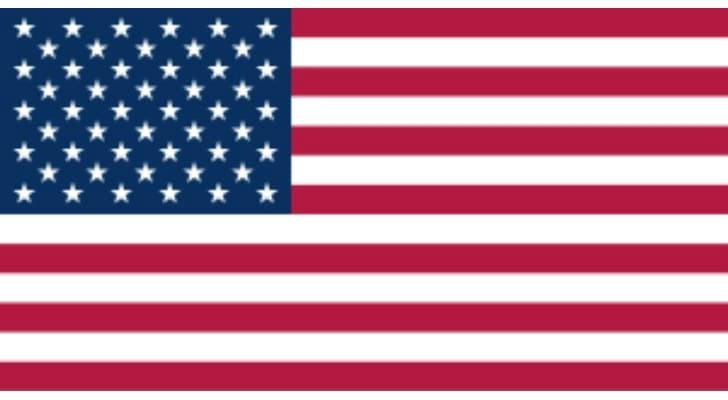【Earn while you learn】Government-supported welder training, no experience required, trainees can earn up to $25 per hour, and the average hourly wage after graduation is about $26.49.
Want to start a high-paying welder career, but have no experience? Government-supported paid welder training can help you! No experience required.
With the rapid growth of the manufacturing and infrastructure sectors in the United States, welders have become a high-demand profession. According to the U.S. Department of Labor, an average of about 45,800 welder job vacancies are expected each year over the next decade. The apprenticeship training period salary is about $20-25 per hour, and the average hourly wage after graduation is about $26.49 ! Salaries range from $55,100 to $75,850 . Now, with government support for welder training, you can apply for paid training programs locally, no experience required, earn while learning, obtain practical skills and industry-recognized licenses, open up opportunities for a stable, high-paying career, and quickly enter this high-paying industry!
💡 Learn how to apply for a government-supported paid welder training program and start your stable, high-paying career today!

What is government-supported paid welder training?
Paid government-supported welder training is a career development program that is a collaboration between government, business, and educational institutions. Designed to provide a "training for employment" experience and with special government support, you will receive mentorship from industry professionals and earn income, even if you have no prior welding experience.
Due to the recent years, with the reshoring of manufacturing and the advancement of infrastructure construction plans, the demand for high-skilled workers in the United States has continued to rise, especially in the field of welding. In response to the shortage of skilled workers, the federal and local governments in the United States are increasing their support for paid welder training programs to promote employment and economic development. In addition, the government has also provided $150,000,000 through legislation such as the Infrastructure Investment and Jobs Act (IIJA) for future development, including apprenticeship programs, which include high-demand jobs such as welders.
Why choose government-supported paid welder training?
1. No experience required – earn while you learn
No experience is required to participate in this training program. Participants can earn $20-25 per hour or more while learning (most traditional apprenticeships are unpaid or low-paid). This program allows you to gain professional skills while earning a stable income.
2. Industry Certification – Guaranteed Employment Opportunities
After completing a government-supported apprenticeship, you will receive a nationally recognized certification, and you will have a nationally recognized welding certification (such as AWS certification) that is highly valued by employers, making it easier to get a high-paying job.
After completing a government-supported apprenticeship, you will receive nationally recognized certifications, such as AWS (American Welding Society) certification and AMSE (Society of Mechanical Engineers) compliance training, which will increase your competitiveness in the job market.
3. Good benefits - government subsidies
The training program is government-supported, so participants can receive up to $12,000 in training subsidies, and some states even provide additional living subsidies. Veteran participants can also apply for welder training course tuition reimbursement through Veterans Affairs Education Benefits.
4. Comprehensive benefits
• 401(k) matching
• Accidental death and dismemberment insurance
• Dental insurance
• Employee assistance program
• Health insurance
• Health savings account
• Paid vacation
• Vision insurance
Who can apply for the government-supported paid welder apprenticeship program?
• Young people (ages 18-24): Those who need to earn money while studying and want to enter a high-paying industry through vocational training.
• Low-income people (ages 25-35): For those who cannot afford training due to financial constraints, the government-supported program provides them with financial security.
• Career changers (ages 36-45): Perfect for adults who are switching to welding from other industries (such as construction or manufacturing).
• Stability seekers (ages 46-65): Want a stable, high-demand technical job.
• Seniors (ages 65+): Looking for flexible or part-time work to continue their careers.
How to Apply for Paid Welder Training supported by the Government?
✨The following will help you successfully apply for government-supported paid welder training. 🎯
1. Federally-Supported Training Programs
Workforce Innovation and Opportunity Act (WIOA)
• Eligible groups: unemployed, low-income workers, veterans, and those seeking a career change.
• How to Apply: Visit the CareerOneStop website or contact your local American Job Center (AJC) to apply for financial assistance for welder training.
Registered Apprenticeship (RA) Program
• Features: Offered by an employer or trade association, combines paid on-the-job training with classroom instruction and typically lasts 3-5 years.
• Find a course: Search for “welder” on the RA website.
2. State or local government resources
State Department of Labor or Community College
Many states offer welder training, such as:
• California: Apply through the California Department of Labor and Workforce Development.
• New York: The New York State Department of Labor offers job training.
• Community colleges: Schools such as Michigan Welder Training Institute offer paid internships.
3. Industry Partner Programs
Training with industry associations and employers
In some states and localities, welders must be licensed; requirements vary.
• Professional organizations offer courses to obtain universal certification. For example, the American Welding Society (AWS) offers the Certified Welder designation.
• The American Society of Mechanical Engineers (ASME) offers a Practical Welding Technology certification for workers seeking to improve their core competencies, and the Printed Circuits Association offers welding certification and training.
• The Occupational Safety and Health Administration (OSHA) requires welders to complete electrical safety training. Other types of OSHA training are also available, but are not usually required.
• Some employers require general or specific certifications for specific jobs. They may cover the cost of employee training and testing.
4. Veterans Resources
GI Bill Benefits
The GI Bill (GI Bill) introduced by the U.S. Department of Veterans Affairs (VA) allows veterans and their spouses or children of active military personnel to receive welder training. GI Bill funds can be used to pay for apprenticeship programs, industry training and certification exams, and can also provide a living allowance.
• Apply through its official website.
Real Case: Changing Lives with a Government-Supported Welder Apprenticeship Program
Case 1: Unemployed man Mike gets paid welder training through WIOA
During the epidemic, Mike lost his job and faced financial difficulties. He applied for a government-supported welder training program through WIOA and obtained a paid training opportunity. After completing the training, he joined a welding company as a welder. Today, Mike has become a formal welder with an annual salary of more than 65,000 Canadian dollars, which has completely changed his life.
Case 2: Veteran Amy uses the Veterans' Rights Bill to enter the welding industry
Amy is a retired Navy veteran. After retiring, she applied for a welder apprenticeship program using the Veterans' Rights Bill. During her apprenticeship, she not only received paid training wages, but also enjoyed living allowances from the Veterans Bill. After completing the apprenticeship program, she obtained AWS certification and is now a welding engineer at a new energy company, with a very impressive income and career prospects.

Paid, government-supported welder training: A path to new opportunities
These real-life success stories show how paid, government-supported welder training programs have transformed careers and lives. Whether through WIOA grants, Veteran GI Bill benefits, or paid apprenticeships, these programs provide valuable skills training while providing financial support to help trainees learn without financial stress.
For anyone looking to break into the welding industry, these programs can be life-changing and open the door to a stable, high-paying career.
